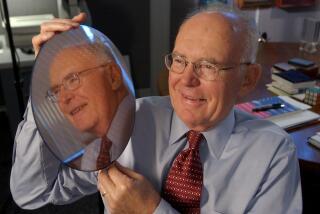Experience Teaches Caution on Chips
- Share via
I have noticed the attention your newspaper has devoted to the error in the Pentium computer chip. Particularly interesting was Michael Schrage’s “Computerdom’s Winds of Change Will Bring a Blast of Fresh Errors” (Dec. 15). While the analyses you have published are largely correct, I think some additional comments reflecting my participation in the computer software business since 1957 may be helpful.
When I was much younger, I owned several automobiles. My experience with those cars and with their manufacturers was analogous to my experience with computer hardware and software in the present day. I think that computer technology is in the same phase of its life as automobile technology was in the 1950s.
The transformation of the automobile from a quirky product that required a lot of technical know-how and enjoyed poor support from manufacturers and dealers to its present relatively reliable state took several decades. Its midwife was the development of strong foreign competition to give consumers alternatives.
Much of the material on the Pentium emphasizes the difficulty of testing such a complex device thoroughly. Edsger Dijkstra, one of the world’s greatest programmers, pointed out decades ago that testing cannot demonstrate the absence of error. It is necessary to apply formal methods to the designs to prove consistency and completeness.
Few software designers apply formal methods to prove their designs correct. An encouraging sign in this respect was Reudiger Ashe’s statement at a 1993 Microsoft seminar to the effect that formal analysis is the only way that operating system software can be shown to function correctly. The emphasis on testing, as opposed to formal analysis, is analogous to looking for one’s car keys under a street light because one can see there, even though the keys were probably lost somewhere else.
Finally, the comment that the prevalence of errors is to some degree attributable to shortening product introduction cycles is true, but saying this does not solve the problem. The industry is working hard to automate design and manufacturing processes to reduce development time and improve accuracy; however, the race itself is the problem.
If consumers want reliability, they should buy products that have been on the market for a year or two, rather than ones that are newest. Avoid the first release of any product.
KARL G. BALKE
Westlake Village






